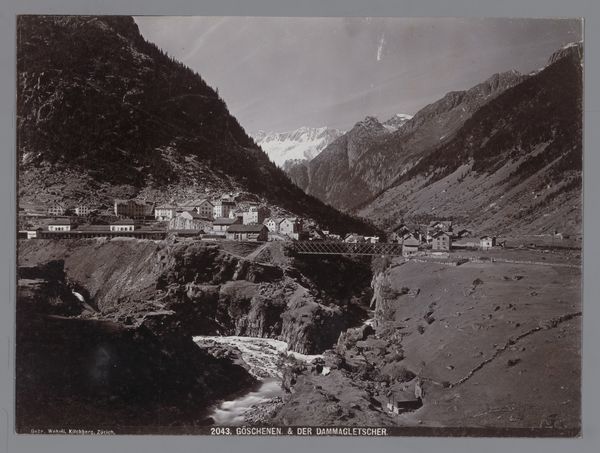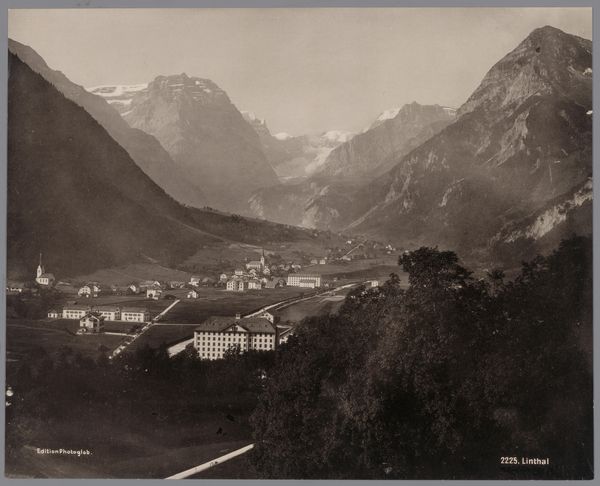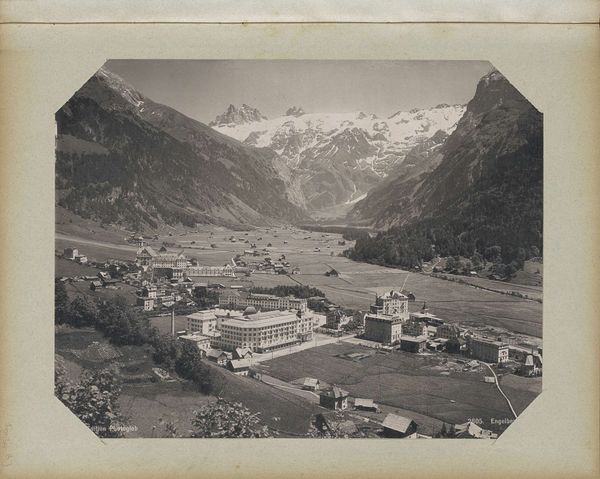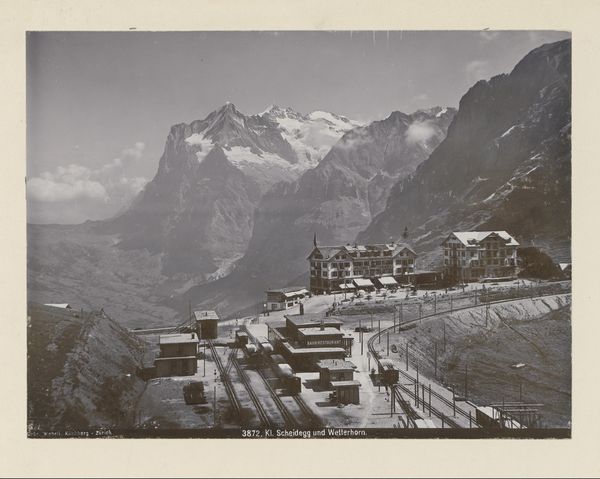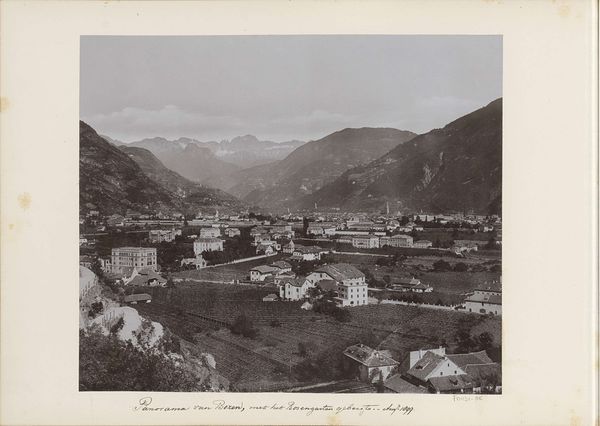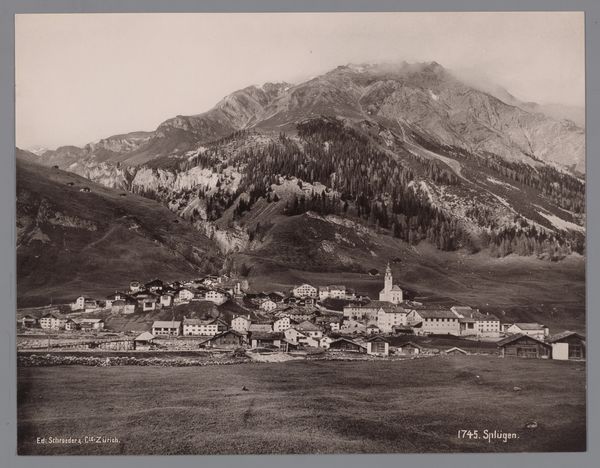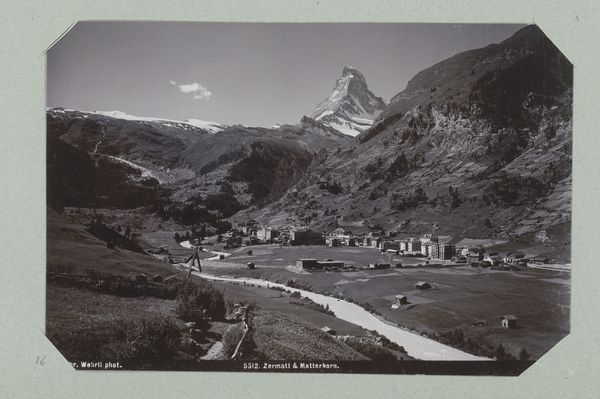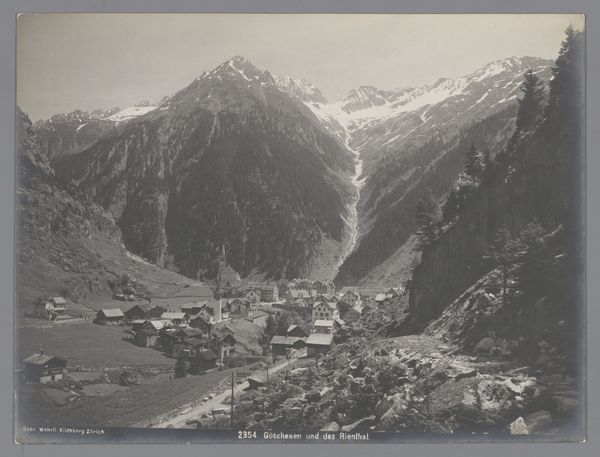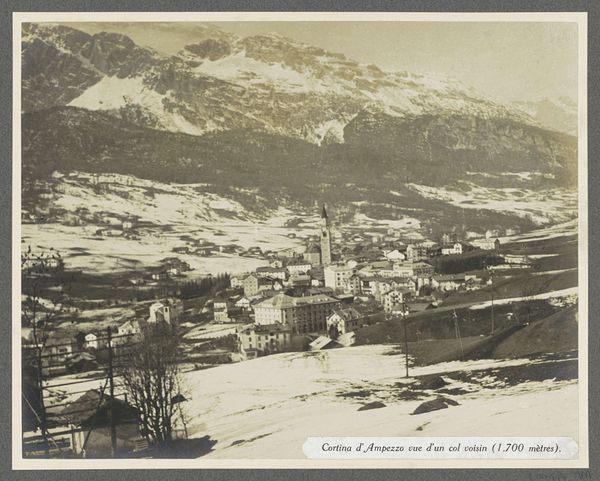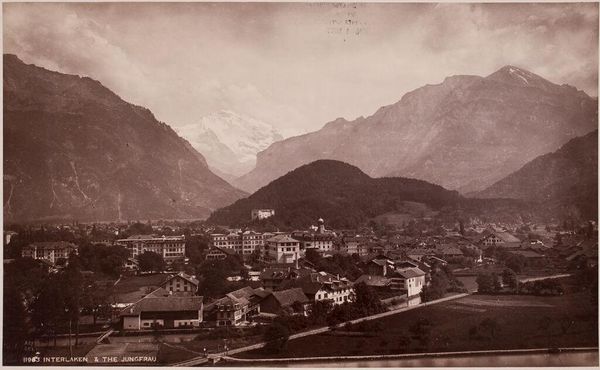
Gezicht op Engelberg, in de verte de Titlis, de Grote Spannort en de Hahnen 1897 - 1924
0:00
0:00
gebruderwehrli
Rijksmuseum
photography
#
pictorialism
#
landscape
#
photography
#
mountain
Dimensions: height 165 mm, width 219 mm
Copyright: Rijks Museum: Open Domain
Curator: Here we have a photographic print titled "Gezicht op Engelberg, in de verte de Titlis, de Grote Spannort en de Hahnen" which translates to "View of Engelberg, in the distance the Titlis, the Grosse Spannort and the Hahnen," created sometime between 1897 and 1924. The artists were the Gebrüder Wehrli, and it is now part of the Rijksmuseum collection. Editor: Wow, it’s so…imposing. The sheer scale of those mountains makes the town below seem almost like a child’s toy set. And that light! It feels so serene and…a little melancholy? Curator: I see that melancholy. The photo’s hazy, pictorialist style romanticizes the landscape, but it also hints at the smallness of human endeavors in the face of nature's grandeur. Remember that tourism became big business at this time. Engelberg transformed—but at what cost? Editor: Exactly! Like, it’s beautiful, sure, but I can't help but think about the environmental impact. All those buildings nestled in the valley… were they built responsibly? Who benefited from all that construction? Curator: Good questions. Pictorialism, as a style, often masked such uncomfortable truths with aesthetic beauty. It's about the selective view, what the artists chose to show—and not show. This photograph is an example of the way idealized landscapes can obscure social and ecological complexities. Editor: And there’s this sense of timelessness… and yet, everything changes, right? It makes you wonder how Engelberg looks today. Are those glaciers still there? I imagine that now those grand hotels have even more stories, maybe darker or more uplifting stories about refugees seeking shelter, of local residents fighting new climate challenges. Curator: Indeed. Placing this image within the context of early tourism and environmental change adds another layer of interpretation, forcing us to confront the choices we make about landscape, development, and preservation. Editor: It's almost like a visual prompt to re-examine our relationship with nature, then and now. And how photography participates in our sense of environmental loss or gain. Curator: Precisely. I appreciate that the artists captured this place with sensitivity to detail—but that perhaps we are now equipped to think through the work from fresh critical angles. Editor: Yeah, it definitely gives you a lot to consider, beyond the surface-level prettiness.
Comments
No comments
Be the first to comment and join the conversation on the ultimate creative platform.
